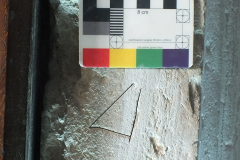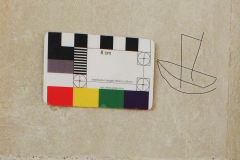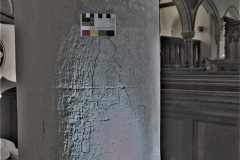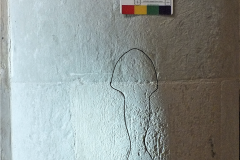St Mary Magdalene, Stockbury, Kent
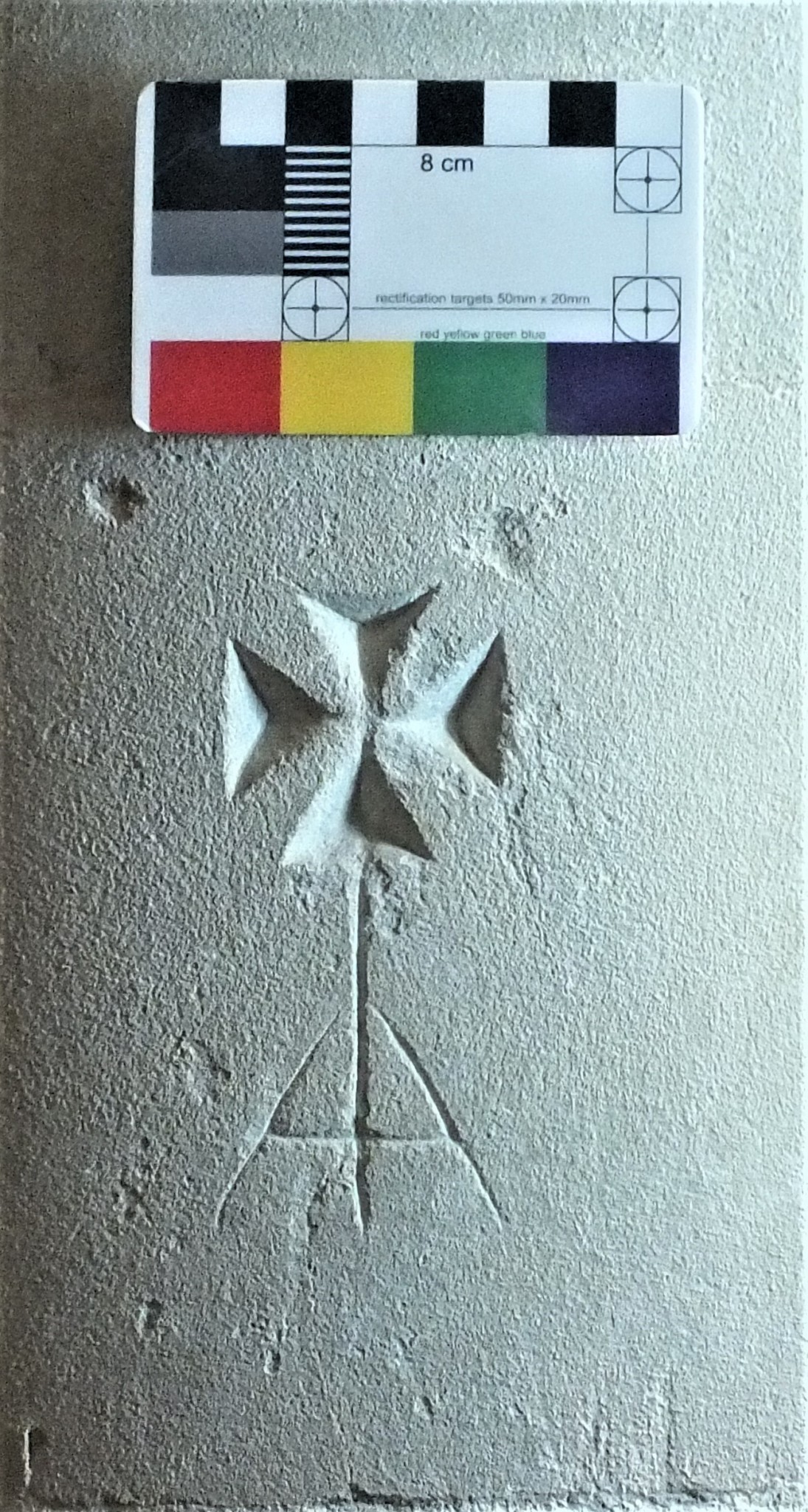
St Mary Magdalene is a relatively small church built alongside the remains of a Norman motte and bailey castle, which overlooks the Stockbury Valley and Dean’s Bottom, a smaller valley that runs into it. The building originates from the late 12th century with 13th and 15th century additions; and was “restored” twice in the 19th century.
The castle is described as Norman and seems to have been a timber motte and bailey castle with little masonry. The motte has been removed and only part of the earthworks are extant. Some of this levelling of the site was almost certainly due to the Great War anti-invasion defences, built along the Stockbury Valley, of which the castle formed part. It may be asked why mention the castle in a piece about church graffiti? This because about forty years ago I was loosely involved in researching these World War I works and resumed this work more seriously in 2012. Then in 2015, a piece of modern graffiti was found during the graffiti survey which ties the two projects together.
This church, which was surveyed by the Kent Medieval Graffiti Survey in 2015, although heavily “restored”, has a variety of graffiti hidden within it, albeit not in large numbers, which have escaped this “restoration”. There are crosses, mason marks’, geometric markings, possibly script, some unknown marks; and modern names and initials.
All but two of the crosses are to be found on two pillars, one each in the north and south aisles. The other two are on the south face of the north tower pillar. Two crosses one each on opposite columns of the aisles, are chisel cut and believed to be the work of a mason.
Only two probable masons’ marks were found, one is chisel cut and L-shaped, thought to be a location mark and is positioned at the top of the vestry doorway arch. The other is strange and is the only example seen by the author and is thought to be a horizontal level line. This is located on the south transept west wall, near the entrance.
Items that can be loosely classed as geometric were found, these include two triangles and a circular pattern of dots.
There is one very odd graffito found on a pillar of the north aisle, a pew is built around it and under the bookrest is what looks like a three-legged matchstick man. In this section there is also a graffito which, with a little imagination, may be a boat.
The only initials and script found in the nave are on two pillars of the aisles. One the first pillar east of the vestry door on the north aisle, below the Matchstick Man there is what seems to be a small piece of script, possibly partly removed. While on the second pillar east of the south door are the initials CI and a possible piece of script.
There are a couple of odd marks found, one unidentified, the other possibly a mushroom. The former is on the first pillar west of the south door in the south aisle, the Mushroom is on the Tower pillar.
Some very modern graffiti was found in the south porch, these were mainly initials, at least two sets were behind a noticeboard. There is one graffito, DEANO WOZ ERE, which seems to be dated July 1976, the flaking paint has removed the first part of the date.
Finally, the has tower a lot of names and initials from the late 19th and early 20th century, almost all at the top of the stairs by to exit to the roof. Mostly these are marks which are often found, left by sightseers, however one seems to tie in with the World War I defences.
The graffito in question reads J.S Lt RE 24/11/1881, fully J.S Lieutenant Royal Engineers 24th November 1881. What then was a Royal Engineer officer doing at the top of the church Tower in late November? As it seems unlikely that a RE officer would climb to the top of the Tower for pleasure at this time of the year, the only explanation that seems to fit is that he was there to look over the land designated as part of a planned defensive line. These defensive works were first proposed in the mid-19th century to counter a feared French invasion. It seems that these plans were updated periodically throughout the 19th and early 20th century and were eventually constructed and maintained during the Great War. They were eventually filled in by German prisoners of war in May 1919, who did not do a very good job as the remains of them can still be seen running up to the churchyard wall.
There is graffiti left by troops in other Kent churches, which may be written up for Raking Light at a later date.
St Mary Magdalene,
Stockbury,
Sittingbourne,
ME9 7RD
Report by Alan Anstee.
Search terms: mason’s mark, cross, dot pattern, dots, St Andrew’s cross, boat, script, initials, world war 1, dates, 1881, 1800s

